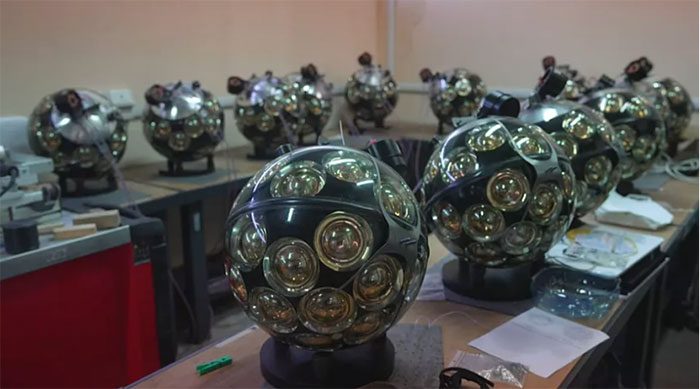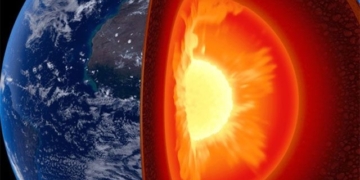In addition to ocean research purposes, the underwater telescope IDMAR is also used by scientists to search for neutrinos, particles that have the potential to decode the origins of humanity and matter in general.

Each sphere attached to the IDMAR telescope is equipped with underwater wave reception devices, helping to detect and record all sounds – Photo: EURONEWS
IDMAR is the largest underwater telescope in Europe, located at a depth of 3,500 meters off the coast of Portopalo di Capo Passero, south of the island of Sicily (Italy).
The IDMAR telescope is a system consisting of 28 vertical metal rods, each fitted with 18 spheres equipped with thousands of sensors.
IDMAR allows scientists to observe and listen to nearly everything happening in the Mediterranean, relaying information to them in real-time.

Ms. Giuseppina Larosa – (Photo: EURONEWS).
Ms. Giuseppina Larosa, one of the research team members, stated that they use IDMAR to accurately track the locations of marine creatures.
“Initially, we thought there were no whales left in the Mediterranean, only sperm whales,” she recalled.
“However, we discovered that they are still here but swimming deeper. Thanks to the sounds, we know where they are and how they move,” the expert added.
In addition to ocean research, scientists also use IDMAR for another purpose: detecting neutrinos from the material world.
Neutrinos are particles that are many times smaller than atoms (subatomic particles). They carry no electric charge and have an extremely small mass, almost equal to zero.
Neutrinos are referred to as ghost particles because they are very difficult to observe, even though hundreds of trillions of neutrinos pass through the human body harmlessly every second.

Mr. Simone Biagi – (Photo: EURONEWS).
Mr. Simone Biagi, another member of the research team, stated that neutrinos have the potential to help humanity decode the mysteries of the material world.
“Neutrinos will definitely provide important answers to help us understand the origins of cosmic rays.”
“Cosmic rays are created by particles bombarding us, striking the Earth. However, we do not know where they come from. If we can measure neutrinos and confirm they come from the universe, it will decode our origins,” Biagi said.
To this day, neutrinos remain a mystery to humanity, challenging all established physical rules.


















































